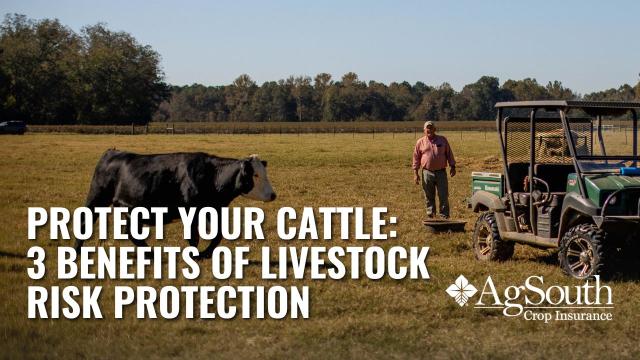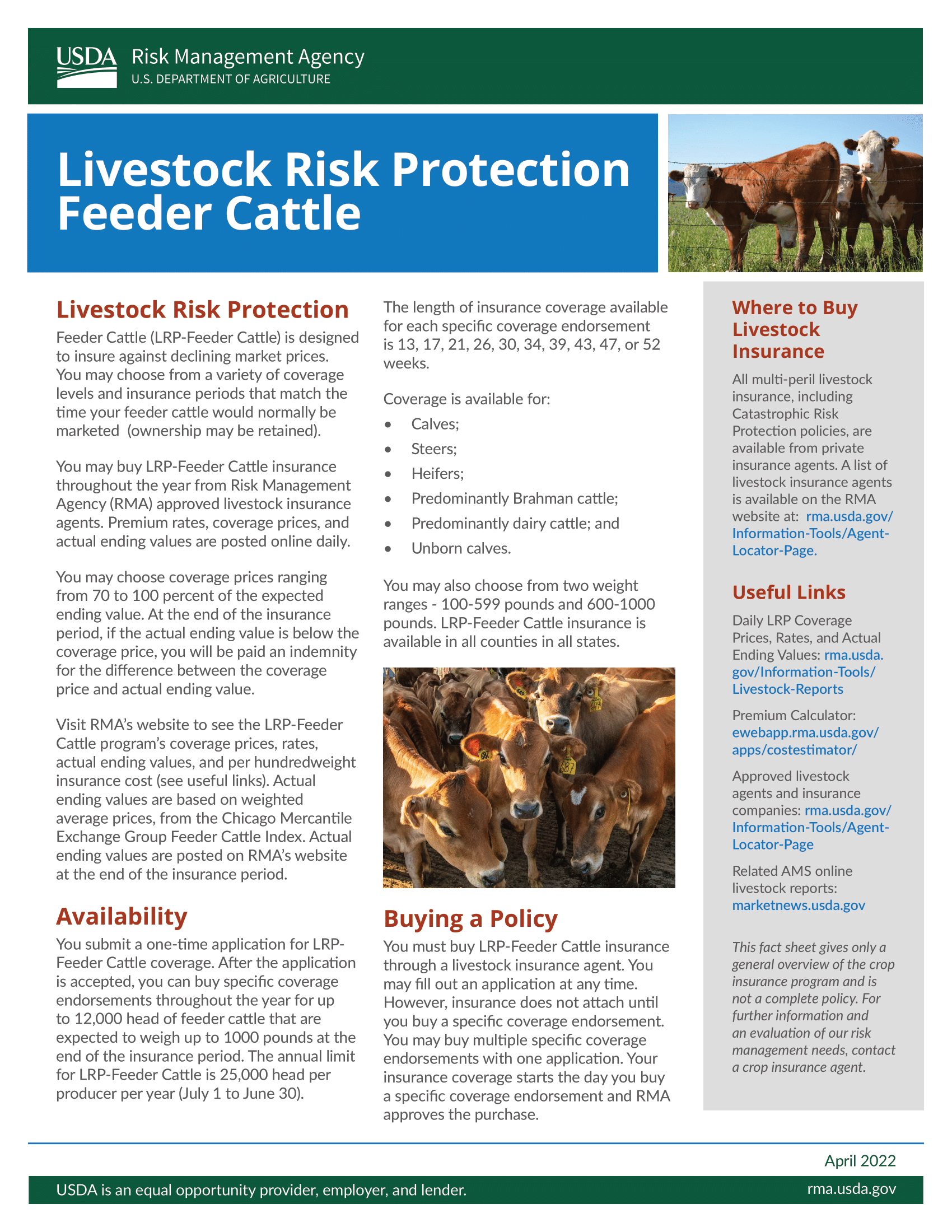Bagley Risk Management Solutions: Your Shield Against Uncertainty
Bagley Risk Management Solutions: Your Shield Against Uncertainty
Blog Article
Recognizing Livestock Danger Protection (LRP) Insurance Policy: A Comprehensive Guide
Browsing the realm of animals threat protection (LRP) insurance policy can be a complex undertaking for lots of in the agricultural field. From exactly how LRP insurance works to the numerous insurance coverage choices offered, there is much to reveal in this detailed guide that can potentially form the method animals manufacturers come close to risk management in their services.

Exactly How LRP Insurance Policy Works
Sometimes, recognizing the technicians of Livestock Danger Security (LRP) insurance coverage can be complex, however breaking down how it functions can give clearness for farmers and breeders. LRP insurance is a risk monitoring device created to protect animals producers against unforeseen price decreases. The policy allows producers to set a protection level based upon their details needs, picking the number of head, weight range, and coverage rate. When the plan is in location, if market prices drop listed below the protection price, producers can sue for the distinction. It is essential to keep in mind that LRP insurance policy is not a profits guarantee; rather, it focuses entirely on rate risk security. The insurance coverage period generally ranges from 13 to 52 weeks, supplying flexibility for producers to pick a period that aligns with their production cycle. By making use of LRP insurance coverage, farmers and breeders can minimize the financial dangers connected with varying market value, ensuring higher stability in their procedures.
Eligibility and Coverage Options

When it comes to protection options, LRP insurance supplies manufacturers the versatility to pick the insurance coverage degree, protection period, and recommendations that finest match their risk administration needs. By understanding the eligibility requirements and insurance coverage choices readily available, livestock manufacturers can make enlightened decisions to take care of risk efficiently.
Benefits And Drawbacks of LRP Insurance
When reviewing Animals Threat Defense (LRP) insurance coverage, it is necessary for animals producers to consider the negative aspects and benefits inherent in this threat management device.

Among the key benefits of LRP insurance is its ability to provide defense against a decrease in livestock costs. This can help guard producers from monetary losses resulting from market variations. Furthermore, LRP insurance coverage supplies a level of versatility, allowing producers to customize insurance coverage degrees and policy durations to match their particular requirements. By securing a guaranteed rate for their animals, producers can much better handle threat and strategy for the future.
Nevertheless, there are additionally some drawbacks to think about. One constraint of LRP insurance policy is that it does not shield against all kinds of dangers, such as disease outbreaks or natural calamities. Additionally, premiums can occasionally be pricey, specifically for producers with huge animals herds. It is crucial for manufacturers to meticulously analyze their individual threat direct exposure and monetary situation to identify if LRP insurance coverage get more is the right risk monitoring device for their operation.
Comprehending LRP Insurance Premiums

Tips for Making Best Use Of LRP Conveniences
Making best use of the advantages of Animals Danger Protection (LRP) insurance calls for tactical planning and aggressive threat monitoring - Bagley Risk Management. To maximize your LRP coverage, think about the adhering to ideas:
Regularly Assess Market Problems: Keep educated about market trends and cost variations in the livestock industry. By keeping track of these aspects, you can make enlightened choices about when to purchase LRP coverage to protect versus potential losses.
Set Realistic Protection Degrees: When picking protection degrees, consider your production prices, market price of animals, and prospective threats - Bagley Risk Management. Setting practical protection levels guarantees that you are adequately secured without paying too much for unnecessary insurance coverage
Expand Your Coverage: As opposed to depending solely on LRP read more insurance, consider expanding your threat management techniques. Integrating LRP with other danger management devices such as futures contracts or options can provide comprehensive protection versus market unpredictabilities.
Evaluation and Adjust Protection Routinely: As market problems alter, occasionally review your LRP protection to guarantee it straightens with your current risk exposure. Changing coverage levels and timing of purchases can aid maximize your threat defense strategy. By following these ideas, you can optimize the benefits of LRP insurance and protect your livestock operation against unpredicted risks.
Final Thought
Finally, animals danger defense (LRP) insurance is a useful device for farmers to take care of the financial dangers associated with their livestock operations. By understanding exactly how LRP functions, qualification and protection options, as well as the pros and cons of this insurance policy, farmers can make informed decisions to secure their livelihoods. By carefully thinking about LRP costs and applying techniques to maximize benefits, farmers can minimize prospective losses and make sure the sustainability of their procedures.
Livestock manufacturers interested in getting Livestock Threat Protection (LRP) insurance policy can check out an array of eligibility standards and coverage choices tailored to their certain livestock procedures.When it comes to coverage alternatives, LRP insurance policy uses producers the adaptability to choose the coverage degree, insurance coverage duration, and endorsements that best fit their danger management demands.To understand the details of Livestock Threat Protection (LRP) insurance policy totally, comprehending the factors influencing have a peek at this website LRP insurance policy costs is crucial. LRP insurance coverage costs are identified by various components, consisting of the coverage level picked, the anticipated cost of livestock at the end of the insurance coverage duration, the type of livestock being guaranteed, and the length of the insurance coverage period.Evaluation and Adjust Insurance Coverage Frequently: As market conditions transform, regularly assess your LRP coverage to guarantee it lines up with your present risk exposure.
Report this page